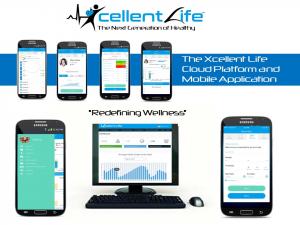Benefits of Real-time Human Diagnostics (RtHD) in Population Health
Empowering Wellness With Technology
LEXINGTON, TN, UNITED STATES OF AMERICA, June 20, 2022 /EINPresswire.com/ -- The days of "one-size-fits-all" medicine are coming to an end. The next step in this evolution isreal-time human diagnostics (RtHD), which employs low cost, non-invasive sensors, and advanced analytics to deliver personalized health insights at the point of care. This technology will enable the prediction of diseases before it happens and facilitate specialized treatment ahead of the onset of symptoms.
It is well known that the earlier a medical condition, the greater and more effective a treatment. RtHD is a paradigm shift in health management that capitalizes on the power of technology to achieve predictive, preventive healthcare for every person, every time.
"An ounce of prevention is worth a pound of cure." -Benjamin Franklin
The current state of population health is rife with inefficiencies. Inaccurate, inefficient, and costly systems are all too common. These problems are a result of the healthcare industry's reliance on static data, which fails to account for the dynamic nature of an individual's health over time. With the rapid growth of chronic diseases, especially in the aging population, healthcare providers are challenged to find ways of reducing the burden caused by diseases. RtHD is one solution that is being explored by healthcare organizations around the world.
RtHD uses artificial intelligence algorithms to analyze an individual's health data and predict future health risks, thereby enabling informed decisions about early interventions. Such systems are being developed by both private and government organizations alike in order to modernize the healthcare system.
Status Quo of Population Health Care
Currently, there are a number of challenges facing the healthcare industry. Though chronic disease management has become a priority for many healthcare organizations, little attention is being paid to issues that surround disease prevention.
The development and progression of chronic diseases is often slow and gradual, so it can be difficult to detect at an early stage. This leads to lengthy periods of undiagnosed disease, which in turn increases medical expenses.
In order to fully grasp the nature of these illnesses, it is critical to determine what they consist of before they ever become clinical; population health management can accomplish this by relying on technology.
WIth RtHD, clinicians can enter information on patients into an electronic database with the objective of identifying risk factors that lead to the development of certain diseases. Since chronic diseases often take years or even decades to develop, a longitudinal approach would be required for understanding them—this is not only time-consuming but also impractical because doctors are already overwhelmed with treating patients who have been diagnosed with a chronic disease.
As such, RtHD would be used proactively as a preventive measure. For example, if the database gathered information on a patient's lifestyle and behavior that showed signs of diabetes development (such as high sugar intake), then doctors could intervene before the disease overwhelms the system.
What’s the way Forward for Population Health?
As the healthcare field continues to evolve and expand, it's important we consider new ways to address rising costs and improve access to care. One way to improve our patient's health is through the use of RtHD. This healthtech approach has been compared to the current state of population health, where we can see biomarkers for disease and use them in screening. Evidence shows that the sooner we diagnose a disease, the better chance someone has to live a healthy life.
RtHD is a new method of tracking biometrics and health data for the purpose of identifying and managing population health. The current state of population health is one of the greatest issues facing the United States, with the Organization for Economic Co-operation and Development(OECD) forecasting that health spending per capita will grow at an average annual rate of 2.7%, and it is expected to reach 10.2% of GDP by 2030, up from 8.8% in 2018.
There are already many ways to track populations and manage their health, with traditional methods including medical records, insurance claims, surveys, and other forms of self-reporting. RtHD removes the need for self-reporting by tracking individuals' biometrics (such as blood pressure, heart rate, body temperature, weight, etc.) over time to identify patterns indicative of underlying conditions. It also gathers more data than traditional methods.
RtHD can tell when a person's blood pressure is elevated or when they have a fever—information that can be used to identify conditions such as diabetes or flu and prevent them from causing more serious complications. RtHD can even track an individual's performance at work or school based on their biometric data.
When this information is shared with a physician or other care provider in real time during a visit or an emergency room visit, it can help doctors make decisions about treatment options that minimize costs and improve outcomes. This is indeed where population health is headed.
Here’s how RtHD will impact your day-to-day wellness
With our increasingly connected world, and with the rise of wearable devices and mobile devices, it's becoming increasingly clear that one of the most important things to consider in population health management is monitoring patients' vital signs and health conditions in
real-time. The benefits of real-time human diagnostics are numerous, but they can be broadly
categorized as either clinical or economical.
RtHD can benefit population health and improve patient outcomes in the following ways:
Delivering Actionable Insights into Patient Health
The ability to rapidly access patient data not only increases efficiency but also improves care.
By providing real-time insights into a patient's condition, providers can intervene before an issue
becomes critical or debilitating. For example, if a patient has a high heart rate or blood pressure
during sleep, they may be at risk of stroke or heart attack during the day if this abnormality is not
addressed immediately. The ability to provide immediate treatment through an app or device
would be very beneficial for patients with chronic conditions who need frequent monitoring and
intervention in order to avoid serious complications down the line.
More Precise Diagnosis
RtHD improves diagnosis accuracy by enabling physicians to access detailed patient data from
multiple sources at once instead of relying on single point-of-care systems for each type of test
result, like blood pressure readings or electrocardiograms (ECGs). This improves diagnostic
accuracy because it allows physicians to review all available data at once instead of just one
piece at a time, which may lead them to miss important information or cause them to
misinterpret it in isolation from other results.
Wellness with Lower Costs
RtHD can help improve treatment outcomes and reduce costs. In addition to helping physicians
make more informed decisions about patient care, RtHD can help clinicians identify patients at
risk of developing complications and intervene before they occur. This will lead to better
treatment outcomes while reducing unnecessary costs associated with hospitalization and
emergency room visits that could have been avoided with earlier intervention.
Faster Diagnosis and Treatment
Currently, when patients visit their doctor's office for an appointment, they often have to wait
weeks or months before receiving results from diagnostic tests such as blood work or imaging
studies like MRIs or CT scans. Timely access to these results can be a critical factor in the
success of treatment, and it can also help doctors and patients avoid unnecessary procedures.
To tackle this issue, Xcellent Life has developed a new kind of approach to diagnostics that
allow doctors to gather information about their patient’s condition in real-time.
The Future is Bright for Health Tech with Xcellent Life
In healthcare delivery, real-time human diagnostics and monitoring has the potential to improve
physician decision-making and patient care by providing evidence of disease states earlier than
current approaches.
Our software works by collecting information from any data source. We have integrated Apple
Health Kit, Samsung, Garmen and FitBit. We designed our platform to be easy to integrate other
data sources into. We can also collect information manually entered by the end-user or through
batch uploads from doctors, EMR systems or any available data source.
When thinking about the possibilities of our solution, imagine collecting comprehensive amounts
of health factors from a variety of data sources as quickly as possible. This includes data
coming from wearables amongst other sources. These data types fall into 6 categories:
Genomic, lifestyle, biometric vitals, blood metrics, diet, and medications. That information is
coupled with medical conditions, personal profile, environmental and location information.
We provide a solution for population health, corporate wellness, underwriting optimization,
health risk analysis, patient engagement and some military applications (let your mind wonder).
Victor L. Brown
Xcellent Life Inc.
+1 6149355161
email us here
Visit us on social media:
Facebook
Twitter
LinkedIn
Legal Disclaimer:
EIN Presswire provides this news content "as is" without warranty of any kind. We do not accept any responsibility or liability for the accuracy, content, images, videos, licenses, completeness, legality, or reliability of the information contained in this article. If you have any complaints or copyright issues related to this article, kindly contact the author above.



